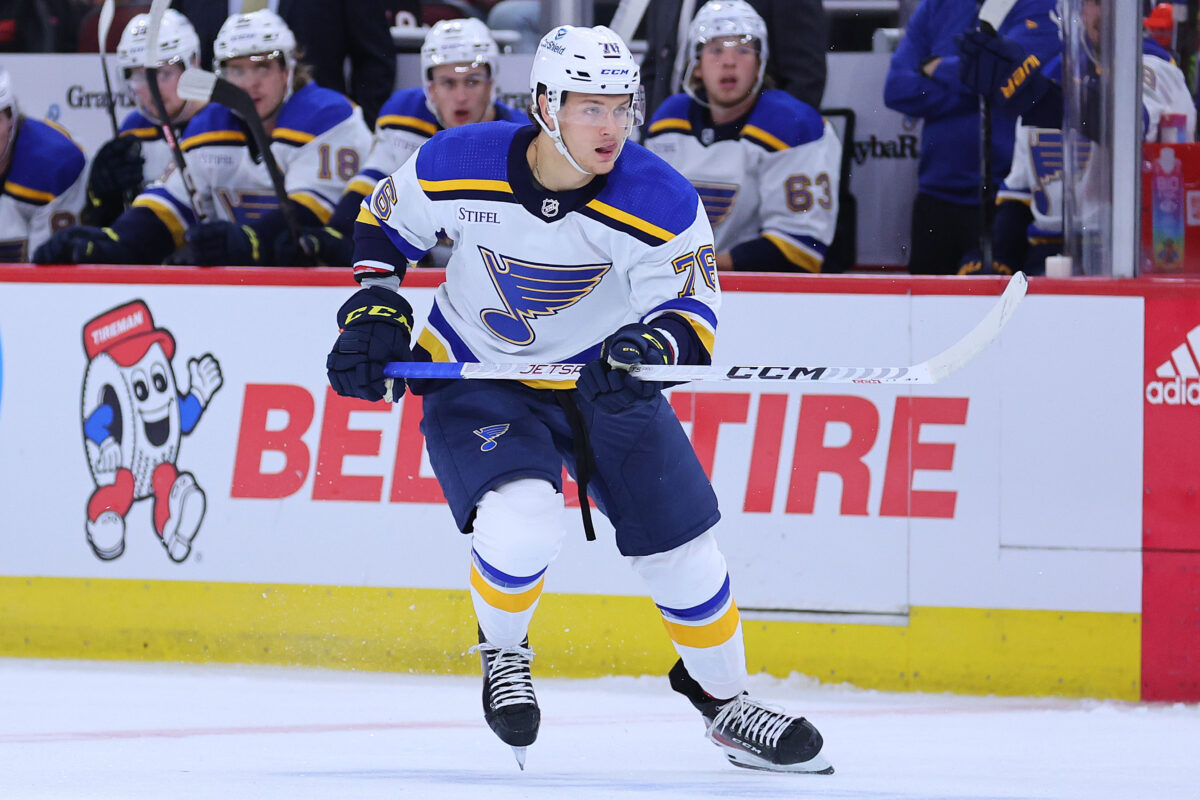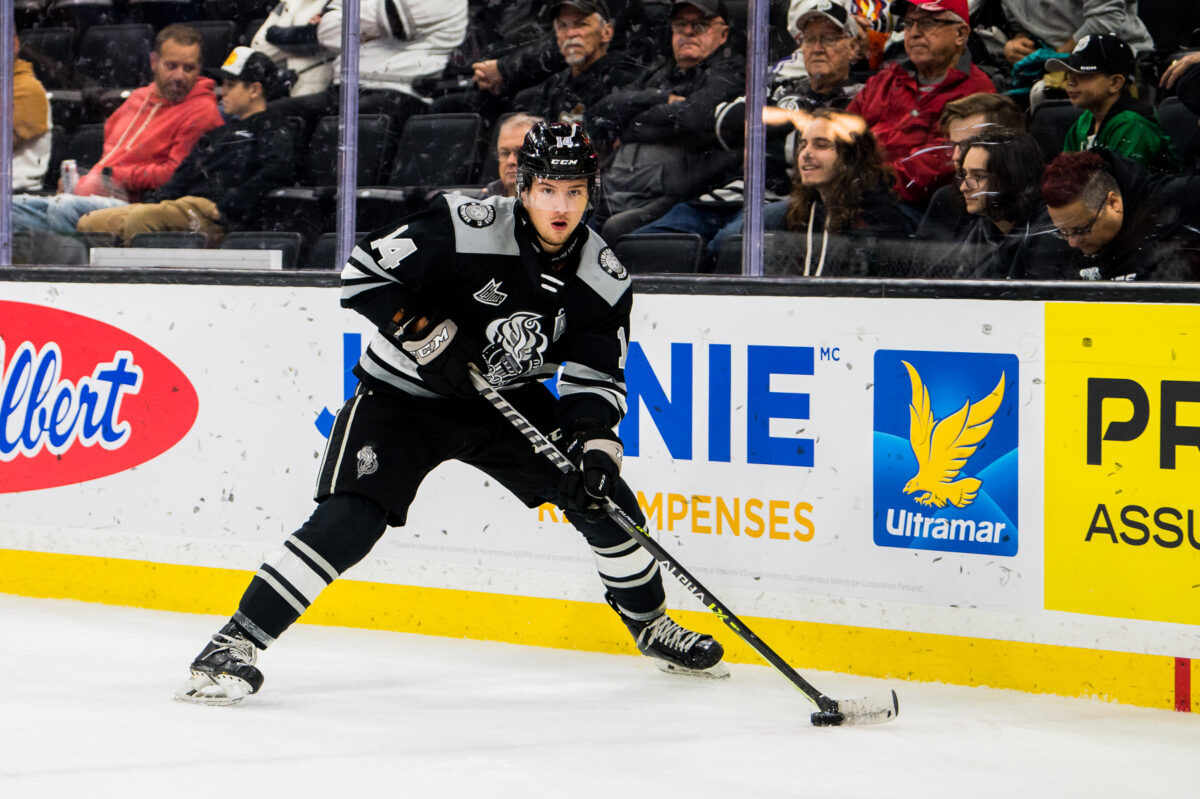The St. Louis Blues‘ playoff aspirations suffered a significant setback during their recent East Coast road trip . Facing off against formidable opponents in the New Jersey Devils, New York Rangers, New York Islanders, and the Boston Bruins, the Blues managed to secure only two victories, effectively diminishing their chances of contending for the Stanley Cup. However, amidst this disappointment, one crucial aspect deserves recognition: the Blues’ point total.

Despite their inconsistency on the ice, the Blues are in a relatively favorable position. While they currently trail teams such as the Minnesota Wild, Calgary Flames, and Los Angeles Kings in the standings, the differentiating factor lies in the accumulated overtime points.
Currently, the Blues boast 69 points with a 33-29-3 record and maintaining a winning percentage above .500. Under normal circumstances, this record would position them well for a wild-card spot. However, they currently sit eight points behind in the Western Conference wild-card race. This is where the significance of overtime points becomes evident.
For instance, consider the Kings, who hold the third spot in the Pacific Division with 32 wins and 20 losses. Despite having fewer wins, their 11 overtime losses mean they have eight more points than the Blues. If the Blues had been able to push more games to overtime, even if they hadn’t won, not only would they be in contention for a wild-card spot, but they might also have been in position to be buyers at the trade deadline on March 8. Instead, the Blues made zero moves and many expect them to be sellers during the offseason.
The Blues’ Struggles Are Easily Rectifiable
The Blues’ roster has performed admirably, but there’s one crucial adjustment needed to optimize their lineup. While the top line boasts consistency and playmaking prowess, the same cannot be said for the second line featuring Brandon Saad, Brayden Schenn, and Jake Neighbours. This line has been plagued by inconsistency and has hindered the team’s offensive output.
Neighbours shows promise, particularly around the net, where he’s scored most of his goals. However, Schenn and Saad, although experienced veterans who understand their roles, and have failed to produce consistently. As a result, the Blues find themselves overly reliant on their top line for goals, exposing a significant weakness in their lineup.
To address this issue, the Blues should consider separating and revamping their second line during the offseason. Signing Jimmy Snuggerud and adding Dalibor Dvorsky to center the second line could inject potential for renewed offence. Additionally, with prospects like Zach Dean and Zachary Bolduc alongside Neighbours, the Blues have the opportunity to enhance versatility and star power throughout their forward lines.
If these adjustments are made, the forward lines could potentially shape up as follows:
Jimmy Snuggerud – Robert Thomas – Pavel Buchnevich
Jake Neighbours – Dalibor Dvorsky – Jordan Kyrou
Zachary Bolduc – Brayden Schenn – Brandon Saad
Oskar Sundqvist – Kevin Hayes – Alexey Toropchenko
By reshuffling the forward lines and integrating new talent, the Blues can address the inconsistency in their lineup and create a more balanced offensive threat.
The proposed lineup adjustments offer would also provide opportunities for younger players to acclimate to NHL speed while optimizing the roles of veteran players like Schenn and Kevin Hayes.
How to Correct the Blues’ Struggles
Analyzing the Blues’ film reveals that Schenn, who is currently playing second-line minutes, is producing at a level of a third or fourth-line center, not a second. Moving him to the wing could better utilize his skills, especially considering his declining speed and playmaking abilities from the center position. This adjustment could rejuvenate Schenn’s performance and contribute to a more balanced offensive attack.
Related: Blues Captain Brayden Schenn’s Regression This Season
Hayes, renowned for his leadership in the locker room, has not delivered the expected level of performance, particularly considering his $3 million salary. His lack of speed and offensive prowess have hindered the team’s offensive capabilities and transition play, leading to costly moments on the ice. Given the Blues’ depth, the team may explore moving Hayes in the summer to create space for players such as Dean, Snuggerud, and Dvorsky.
Dean initially struggled to find his rhythm in the American Hockey League with the Springfield Thunderbirds. However, as of late, he has recently showed drastic improvement and earned a call-up to the NHL. If the Blues continue to face challenges in the standings, interim head coach Drew Bannister may provide Dean with NHL opportunities to evaluate his potential following his acquisition in the Ivan Barbashev trade.

In addition to addressing the forward lines, the Blues could consider moving Saad in the offseason to acquire draft selections and further bolster their prospect pipeline. These moves would potentially clear cap space to accommodate prospects and allow for significant signings on the defensive side, including finding a suitable partner for Colton Parayko on the top line.
If the Blues proceed with these roster adjustments, the predicted lineup for the 2024-25 season could be as follows:
Jimmy Snuggerud – Robert Thomas – Jordan Kyrou
Pavel Buchnevich – Dalibor Dvorsky – Jake Neighbours
Zachary Bolduc – Zach Dean – Brayden Schenn
Alexey Toropechenko – Oskar Sundqvist – Nathan Walker
Overall, these strategic moves aim to optimize the Blues’ roster composition, enhance performance, and position the team for success in the upcoming season.
The Blues’ Path Forward
The team isn’t really that far off, and in fact, could be bigger buyers than sellers this summer. General Manager Doug Armstrong has been very firm on the fact that the Blues are in a retool, not a rebuild. If they make these moves and let some of the top prospects compete for roster spots, while partnering them with playmakers and veterans who understand the NHL, this roster could compete next season.
